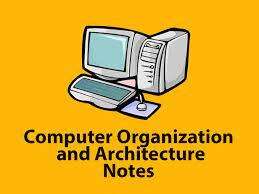Computer Architecture and organization

Computer Architecture is consideration with the structure of the computer system . Where as Computer organization is concerned with the way hardware components are connected together form a computer system.
1.write down the purpose of program counter and stack register:
Ans:– During program execution the program counter register holds the address of next instruction to be executed. Sometimes in a program we have a subroutine which can transfer the control from one to another when it gets the RET or return statement, the control must move to the proper position ,that is why program counter is important.
A stack pointer is 16 bit register which holds The address of the top of the stack. In 0-addressing scheme we use PUSH and POP instruction in this case .The position of the top of the stack must be stored in stack pointer register .Generally sum part of memory is used as a stack . Therefore for PUSH operation, the stack pointer is decremented by one and for POP operations stack pointer is incremented by one.
2.Why 0-address is so called ?
Ans:- In 0-address scheme we can use instruction specifying 0-address that is no address is provided with some instructions such as arithmetical instruction .
Ex: ADD , SUB ; that is why this addressing is known as 0-addressing
| X = A+B |
PUSH B ADD POP X HLTyou can read addressing mode details here https://computerscnotes.com/different-types-of-addressing-mode-in-computer-architecture/
3.Difference between Memory mapped I/O and isolated or I/O mapped I/O?

4.Write the different characteristic of RISC AND CISC processors:
Ans:- In early 1980’s a no of computer designer recommended that computer should use fewer instruction with simple construction so that the first execution is possible by the cpu. This type of computer is classified as a reduced instruction set computer (RISC).
Now a days a computer, a large no of instruction is classified as a complex instruction set computer(CISC).
The main characteristic of RISC are –
- Relatively fewer instruction.
- Relatively few addressing mode.
- Memory access is limited to LOAD and STORE instruction.
- AU operation done within the register of the cpu.
- Fixed length easily detected instruction format.
- Single cycle instruction exe.
- Hardware rather than microprogram controlled.
The main characteristic of CISC are –
- A large no of instruction(100-250).
- Same instruction perform specialized task and are used frequently.
- A large variety of addressing mode.
- Variable length instruction format.
- Instruction manipulates operands in memory.
5.Difference between architecture and organization:?
Ans:– Computer organization is concerned with the way the Hardware components operate and they are connected together to form the computer system whereas , architecture is concerned with the structure and the behaviour of the computer as seen by user. It includes the information format, the instruction aet and technique for addressing memory.
6.what is WORD?
Ans:- A memory unit is a collection of storage cells together with associated circuit needed for transfer information. The memory store binary information in groups of bit called WORDS.
7.what is Self computing code?
Ans:– The codes in which the 9’s complement of a decimal when represented in the code is easily obtained by changing 1’s to 0’s and 0’s to 1’s complement is known as self computing code. This property is useful when arithmetic operation is done in single complement representation.
8.what is Locality of reference?
Ans:- Analysis of a large number of typical programs has shown that that the references to memory at any given interval of time tend to be confined within a few localized areas in memory. This Phenomenan is known as The property of locality of reference.
9.what is parity bit?
Ans:- The most common error detection code is parity bit . A parity bit is an extra bit included with a binary message to make the total number of 1’s either even r odd.
10.what is overflow?
Ans:- When two number of n digits are added and the sum occupies n+1 digits, we can say that overflow occure . An overflow condition can be detected by observing the carry into the signed bit position, and the carry out of the signed bit position.
11.what is Mantissa and exponent ?
Ans:– A floating point representation of a number has two parts . The 1st part represent signed fixed point no called the mantissa and the 2nd designates the position of decimal point and it is called exponent.
M × ; m= 0.613, e=0412.what is instruction format ?
Ans :- The logical or physical structure of a computer system is normally described in its reference manual provided with the system. Such manual explains the internal construction of the CPU including the processor , register available and their logical capability. It also lists all hardware implemented instruction with their binary code format and provide a precise definition of each instruction . This list is known as instruction format .The most common field present in the instruction format are –
- Op code.
- Operand.
- Addressing mode
13.Comparison between direct mapping and associative mapping ?
ANS:
- In associative mapping the whole address is searched where as indirect mapping 1st the index field is matched then the tag field as a result less no of comparison is performed .
- Associative mapping is very much used in sequential access where as direct mapping is used for random access.
- The performance of associative mapping is always average but direct mapping technique can have high or low Performance .
- Associative mapping is simpler and easier for implementation than direct mapping technique.
- In associative mapping more bits are required for address specification and matching address specification and matching address than direct mapping technique
you can also visit here for more https://www.geeksforgeeks.org/differences-between-computer-architecture-and-computer-organization/
Your article helped me a lot, is there any more related content? Thanks!
Your article helped me a lot, is there any more related content? Thanks!